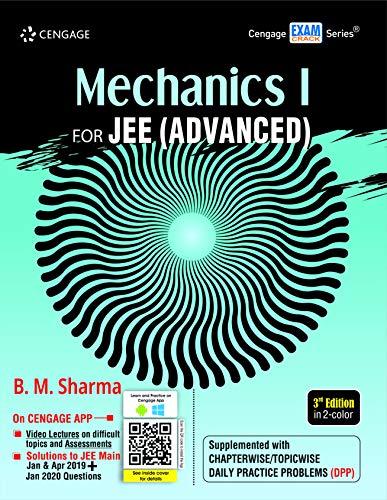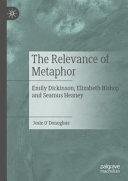Vanquished
https://ebookmass.com/product/vanquished-paper-billionairesbook-3-ainsley-st-claire/
ebookmass.com
hope the new edition will stimulate natural curiosity in each reader to embark on their own path of nutritional inquiry.
CHAPTER FEATURES
Something new to this textbook is that each chapter was vetted for scientific accuracy by Tonia Reinhard, Registered Dietitian, author and professor of Nutrition and Food Science. With her contribution the reader can have confidence that all content is current and research supported.
This third edition presents consistent chapter organization. Each chapter begins with a related quote, learning objectives, and key terms that set the stage for learning. Every chapter has an introduction that is written to serve as a segue into more detailed content. At the end of each chapter is a Relate to Patient section that compiles and lists information for the reader, so they can incorporate lessons learned during patient education and nutritional counseling. The next section, Practice for Patients, offers an opportunity to critically think through a patient case, while applying information from the chapter. Finally, the Relate to You section includes challenges to the reader to self-apply the information, drawing from personal eating practices.
Nutritional content has been researched and referenced and is current for the moment. Even as you read this statement, new ideas are being discussed in the world of nutrition. As stated earlier, nutrition is not a static science, so it is very possible new trends are emerging.
NEW RESOURCES
New to this edition and available online is Chapter 18, Nutritive Value of Complimentary Therapies for Oral Care. This chapter complements information in Chapter 8, Dietary and Herbal Supplements. An introduction and history of holistic or complimentary therapies is explained. Content, including nutritional value, for progressive or nontraditional practices includes miswak, oil pulling, essential oils, aromatherapy, and teas. Step-bystep instructions for making a breathing inhaler, frozen oil bites, safety guidelines for using aromatherapy, and brewing tea for the best flavor and benefit are presented.
Contributors and Reviewers
CONTRIBUTORS
Jill Gehrig, RDH, MA
Dean Emeritus
Division of Allied Health & Public Service Education
Asheville-Buncombe Technical Community College
Asheville, North Carolina
Deb Milliken, DMD
Professor and Faculty Chair
Department of Dental Education
South Florida State College
Avon Park, Florida
Dawn Pisarski, RN, MS, ANP-BC
Professor
Department of Nursing
South Florida State College
Avon Park, Florida
REVIEWERS
Judy Danielson, MDH
Clinical Assistant Professor
University of Minnesota School of Dentistry
Golden Valley, Minnesota
Heather Doucette, MEd
Assistant Professor
Dalhousie University
Halifax, Nova Scotia, Canada
Pam Kawasaki, RDH, MBA
Associate Professor
Pacific University
Hillsboro, Oregon
Connie Kracher, PhD
Associate Professor of Dental Education
Indiana University Purdue University
Fort Wayne, Indiana
Shawna Rohner, MS
Professor
Pacific University
Hillsboro, Oregon
Claire Tucker, MEd
Assistant Professor
University of Arkansas for Medical Sciences
Little Rock, Arkansas
Cynthia P. Wampler, MS
Professor of Dental Hygiene
Florida State College at Jacksonville
Jacksonville, Florida
Chapter
17
Nutritional Considerations for Special Population Groups
Rebecca Sroda and Dawn Pisarski
Chapter 18 Nutritive Value of Complimentary Therapies for Oral Care (Available ONLINE through our Navigate 2 Advantage Access site)
Dawn Pisarski
Appendix Nutrients at a Glance
Glossary Index
PART I Introduction
Enzyme
Food Craving
Food Habit
Gastrointestinal Tract
Jejunum
Nutrients
Nutrition
Peristalsis
Portion Distortion
Villi
INTRODUCTION
You are among the majority if you don’t cook like your mother you subscribe to a new generation’s feeding patterns. How you nourish yourself and family is not the same experience as it was for your parents. Meal planning, preparation, and eating are very different in the 21st century, which makes your eating routines unique compared with that of previous generations. The 20th century mutated the concept of family mealtime with the help of food processing plants, a prolific fast-food industry, and targeted mass-marketing concepts.1,2 Prepackaged meals and aisles of frozen meals predominate shopping carts and home pantries and freezers. Mom no longer spends hours in the kitchen preparing meals, and dinner is not always on the table when the bread winner returns home after a long, hard day at work.
(For better understanding of the major corporations that produce our food, watch the videos: Food, Inc. and Fed Up)
More hours per day are spent at work, which puts more stress on the body. Most of us have other destinations than home after a busy day at work.
According to the Centers for Disease Control and Prevention, Anthropometric Reference Data: Average American male is 5′9″ tall and weighs 195.5 pounds and the average American woman is 5′3″ and 166.2 pounds.
How does this compare to your height and weight? Read the following article for more information: www.npr.org, July 25, 2014. The Average American Man Is Too Big for His Britches by Serri Graslie.
PORTION DISTORTION
Studies show that portion sizes served in homes, fast food, and fine dining restaurants have increased over the last 20 years. This increase in portion sizes, coined portion distortion, has a direct cause-and-effect relationship with the obesity epidemic. Consider the following examples at the U.S. Department of Health Web site: http://www.nhlbi.nih.gov/health/educational/wecan/eat-right/portiondistortion.htm
See Figure 1-2 PORTION DISTORTION for examples of changes in food portions.
Parents who condition children to eat everything on their plate need to think about what and how much to serve on the dish. With the gradual increase in portion distortion, we mindlessly consume the contents of a meal not until full, but rather until gone. Most diners are not conscious of calories consumed and get more satisfaction from a feeling of getting their money’s worth.
Opt for NO WAIST! Do not be a victim of portion distortion. When eating out:
Opt for the small—forget jumbo, king size, or even medium or large.
Forget the sweet sodas and make water or unsweetened tea your beverage of choice.
Ask for a to-go box when ordering your meal. Remove half of what is served on the plate and put it in the box for a later meal.
At home, serve food on smaller plates and beverages in smaller glasses.
Repackage foods bought at the big box store. The bigger package you pour from, the more you will eat.
Eat slower, savor every bite, and occasionally put the fork down, look around, and see what could happen if you do not become a conscious consumer.
For more reading on this topic—Mindless Eating—Why We Eat More Than We Think by Brian Wansink, PhD.
FOOD HABITS/FOOD CRAVINGS
You may be choosing the food you eat out of habit, which is no more than mindless, routine eating. Habits are repetitive, and thought is not given to what you choose or why you choose a certain food. However, on a subconscious level, there is an association between eating the food and a comforting feeling or event. Some food habits are borne out of family traditions like turkey for Thanksgiving, cake on birthdays, and cookies for Christmas. Other food habits are created out of social expectations like holding Starbucks coffee as you shop or beautifully displayed finger foods at a party to nibble on as you network and commiserate.
It has been said that: The human body has an innate wisdom. It lets us know when it needs a specific nutrient. When it talks to us like that, we experience craving.
Food cravings can be either emotional or physiological. Not everybody gets them, but for those who do, they are very real. Unlike a food habit, food cravings are a conscious longing for something specific. If your craving is on an emotional level, it remains steady as long as the emotional need remains. Foods high in fat and carbohydrates tend to be chosen as comfort foods like chocolate candy, ice cream, or chocolate chip cookies. Once you fulfill the need, the craving disappears.13,14
If your craving is on a physiological level, it means hormones are in fluctuation.15,16 You may go through phases, like eating peanut butter and crackers every day around 4:00 PM for 2 weeks and then smoked almonds at the same time for the next 2 weeks. This is neither accidental nor coincidental. If what you crave is based on a physiologic need, then your body will communicate when adequate levels are restored by eliminating the desire. If the craving is sustained, like having ice cream every night after dinner: it may start out as physiologic need and then turn in to habit. Table 11 gives examples of physiologic cravings.







